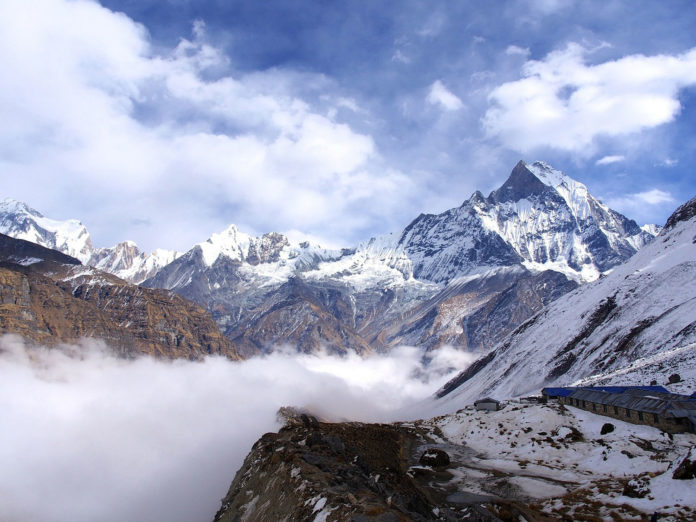Himalayan glaciers are undergoing rapid mass loss but rates of contemporary change lack long-term (centennial-scale) context.
Meltwater released by Himalayan glaciers forms the headwaters of the major river systems in Asia. The acceleration of melting of Himalayan glacial masses has huge ramifications for many people who rely upon Asia’s major river systems for food and energy.
A new study by the University of Leeds suggests that Himalayan glaciers are shrinking far more rapidly than glaciers in other parts of the world. The analysis reveals that over recent decades the Himalayan glaciers have lost ice ten times more quickly over the last few decades.
Scientists reconstructed the size and ice surfaces of 14,798 Himalayan glaciers during the Little Ice Age. They calculated that the glaciers had lost around 40 percent of their area – shrinking from a peak of 28,000 km2 to around 19,600 km2 today.
Dr. Jonathan Carrivick, corresponding author and Deputy Head of the University of Leeds School of Geography, said: “Our findings clearly show that ice is now being lost from Himalayan glaciers at a rate that is at least ten times higher than the average rate over the past centuries. This acceleration in the rate of loss has only emerged within the last few decades and coincides with human-induced climate change.”
Scientists used satellite images and digital elevation models to produce outlines of the glaciers’ extent 400-700 years ago and reconstruct the ice surface. The satellite images revealed ridges that mark the former glacier boundaries.
Using the geometry of these ridges, scientists estimated the former glacier extent and ice surface elevation. They then compared glacier reconstruction to the glacier now to determine the volume and mass loss between the Little Ice Age and now.
They found that the Himalayan glaciers are generally losing mass faster in the eastern regions, taking east Nepal and Bhutan north of the main divide. This variation is probably due to geographical features on the two sides of the mountain range and their interaction with the atmosphere – resulting in different weather patterns.
Himalayan glaciers are also declining faster where they end in lakes, which have several warming effects, rather than where they end on land. The number and size of these lakes are increasing, so continued acceleration in mass loss can be expected.
Dr. Carrivick said: “While we must act urgently to reduce and mitigate the impact of human-made climate change on the glaciers and meltwater-fed rivers, the modeling of that impact on glaciers must also take account of the role of factors such as lakes and debris.”
Co-author Dr. Simon Cook, Senior Lecturer in Geography and Environmental Science at the University of Dundee, said: “People in the region are already seeing changes that are beyond anything witnessed for centuries. This research is just the latest confirmation that those changes are accelerating and that they will have a significant impact on entire nations and regions.”
Journal Reference:
- Lee, E., Carrivick, J.L., Quincey, D.J. et al. Accelerated mass loss of Himalayan glaciers since the Little Ice Age. Sci Rep 11, 24284 (2021). DOI: 10.1038/s41598-021-03805-8
